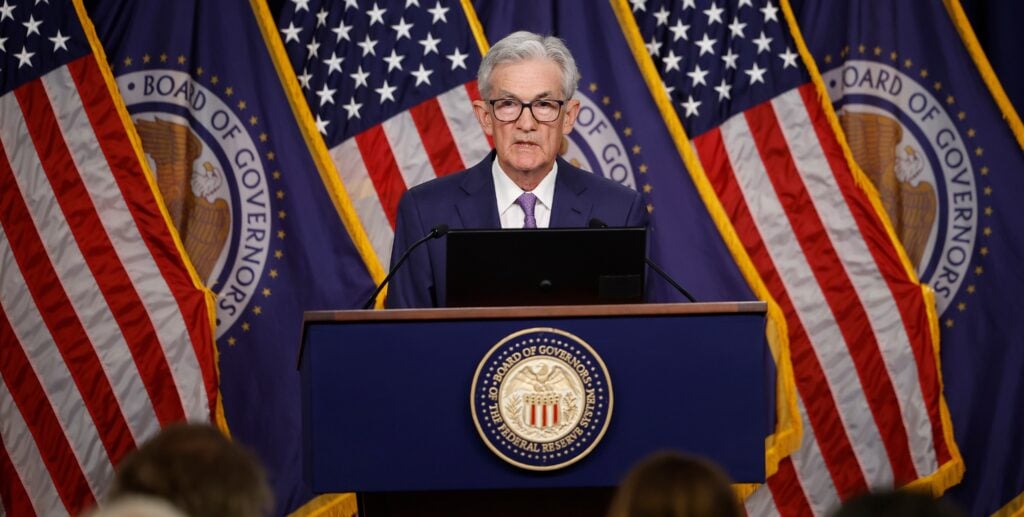Owning a home can be an exciting and rewarding experience, but it comes with a range of costs that can surprise even the most prepared home shoppers. While you might be ready for the mortgage payments, the hidden costs of owning a home can add up quickly and impact your budget.
According to one recent study, these under-the-surface expenses for a median-priced home valued at $436,291 can add up to $18,118 annually. That’s an additional $1,510 each month above and beyond normal mortgage payments. A CNBC report compares these costs to “buying a used car every year.”
Save thousands when buying a home
HomeLight-recommended real estate agents are top-tier negotiators who understand the market data that helps you save as much as possible when buying your dream home.
In this post, we provide an overview of these often-overlooked expenses to give you a better idea of what to expect as you plan and save to buy a home.
1. Property taxes
Property taxes are a significant annual expense for homeowners. These taxes are based on the assessed value of your property and can vary widely depending on your location. On average, property taxes can range from $1,000 to over $9,000 per year, with some states like New Jersey and Illinois having the highest rates. Some states with the lowest property tax rates include Hawaii and Alabama. A local real estate agent can give you a ballpark estimate of what you might pay in taxes on a house in your desired market.
2. Homeowners insurance
The average annual cost of homeowners insurance in the U.S. is around $2,728, or about $227 per month. What you pay will vary based on based on factors like the location of your home, its size and age, and the coverage limits you choose.
You’ll need to budget more for home insurance in Disaster-prone states like Florida, Louisiana, and Oklahoma. For example, some homeowners in South Florida are paying an extra $500 a month in insurance costs. Because of the increasing risk to insurance companies, homeowners nationwide are expected to see a 6% increase in average premiums before the end of the year.
Ask your agent about homes for sale that might have more affordable insurance rates or features that qualify for discounts, and shop around for the best rates and policies to keep your expenses manageable.
3. Home maintenance costs
Regular home maintenance is necessary to keep your property in good condition and prevent costly repairs down the line. These costs can include routine tasks like cleaning gutters, servicing HVAC systems, painting, and maintaining the landscaping. On average, homeowners should budget around 1% to 4% of their home’s purchase price annually for maintenance. For a median-priced $436,000 home, this means setting aside $4,360 to $17,440 each year for upkeep — or a minimum of $363 per month. You may not always need these funds, but they play a key role in maintaining your investment.
4. Utility costs (electricity, gas, internet, cable)
All combined, Americans pay an average of around $429 per month for their utility bills, according to Forbes. These costs can be higher in larger homes, regions with extreme weather conditions, or areas with limited utility options. For example, homeowners in Hawaii pay the highest monthly energy bill ($177.78), and homeowners in Utah pay the lowest ($80.87).
Implementing energy-efficient practices and appliances can help reduce your utility expenses, but it’s important to be prepared for this ongoing cost as part of your homeownership budget.
How to save money: The core monthly costs we’ve listed thus far have increased 26% in the last four years — from $1,202 in 2020 to $1,510 in 2024, according to an analysis by Bankrate. Fortunarelty, there are a number of ways you can reduce monthly expenses. See this post by the National Association of Realtor’s HouseLogic team to learn 35 money-saving household habits.
5. Major repairs or replacements (roof or HVAC)
Major repairs or replacements, such as a new roof or HVAC system, can be significant expenses for homeowners. According to Angi, the cost of replacing a roof can range from $5,855 to $13,116, depending on the size and materials used. The average cost is $9,425.
Similarly, an HVAC system replacement can cost between $5,000 and $12,500. These costs can add up quickly and may not be covered by insurance. Regular maintenance and inspections can help extend the life of these systems, but it’s prudent to be prepared for these and other potential major repair expenses.
6. Private mortgage insurance (PMI)
If your down payment is less than 20%, you may be required to pay private mortgage insurance (PMI). PMI is designed to protect the lender in case you default on your loan. According to a recent Urban Institute analysis, the average monthly cost of PMI can range from 0.46% to 1.5% of the original loan amount. PMI costs vary based on the percentage of the down payment and the loan’s interest rate.
If you put down 5%, 10%, or 15% on a $436,000 home, you could pay an additional $100 to $400 per month for required private mortgage insurance. While PMI can be canceled once you reach 20% equity, it’s an additional cost that can impact your monthly budget in the early years of homeownership.
7. HOA and condo fees
Homeowners Association (HOA) and condo fees are recurring costs that cover the maintenance and upkeep of common areas and amenities in your community. These fees can range from $100 to $500 per month, depending on the services and amenities provided. The average monthly HOA fee in the U.S. is $390, according to an analysis by Today’s Homeowner.
In some luxury communities, these fees can be much higher. It’s important to consider these costs when purchasing a home or condo, as they can significantly affect your monthly expenses. Ask your real estate agent to inform you of any HOA considerations before viewing a home.
8. Pest control (termites, rodents)
Investing in pest control is important to protect your property from damage caused by termites, rodents, and other pests. According to Angi, pest control services can cost between $200 and $600, but severe infestations may require more extensive treatment, costing thousands of dollars.
Regular inspections and preventative treatments can help minimize these costs, but it’s important to budget for potential pest control expenses. Most homeowners will spend between $75 and $150 on a termite inspection.
9. Mold or water damage
Mold and water damage can pose serious health risks and lead to costly repairs. According to Angi, the average cost for mold remediation is $2,235, and most projects cost between $1,125 and $3,345. However, depending on location, the type of mold, and the size of the infestation, costs can be much higher.
Water damage restoration costs can vary widely, from a few hundred dollars for minor leaks to tens of thousands of dollars for major flooding. Regular inspections and prompt repairs of any water issues can help prevent mold growth and minimize repair costs.
10. Closing costs when buying
Closing costs are the fees and expenses you pay when finalizing the purchase of your home. These costs can include loan origination fees, title insurance, appraisal fees, and more. On average, closing costs can range from 2% to 5% of the loan amount. For a $436,000 home, this could mean paying $8,720 to $21,800 at closing.
Discover How Much Home You Can Afford With Our Home Affordability Calculator
Understand the costs associated with buying a home and find out what safe budgeting looks like.
Mortgage calculators can help you plan
Mortgage calculators are useful tools for estimating your monthly payments, but they often overlook many of the hidden costs of homeownership. It’s best to find one that will account for property taxes, HOA fees, homeowners insurance and other costs.
If you’d like to get a preliminary glance at what safe budgeting might look like, you can start with HomeLight’s easy Home Affordability Calculator.
More free calculators: To make your homeownership planning even more effective, try HomeLight’s down payment and closing cost calculators.
States with the highest homeownership costs
Homeownership costs can vary significantly depending on where you live. States with the highest homeownership costs often have high property taxes, expensive insurance rates, and higher overall living expenses. According to the Bankrate analysis, here are three states with the highest homeownership costs:
- Hawaii annual cost: $29,015 ($2,418 monthly)
- California annual cost: $28,790 ($2,399 monthly)
- Massachusetts annual cost: $26,313 ($2,198 monthly)
States with the lowest homeownership costs
Conversely, some states offer more affordable homeownership costs, with lower property taxes, insurance rates, and overall living expenses. Several states in the Southeast are known for their lower costs. Here are three states with the lowest homeownership costs:
- Kentucky annual cost: $11,559 ($963 monthly)
- Arkansas annual cost: $11,692 ($974 monthly)
- Mississippi annual cost: $11,881 ($990 monthly)
Find an affordable home at a more affordable rate
With HomeLight Ultra, you assume the current low-rate loan on our home listings so you can buy with peace of mind and save thousands over the lifetime of your loan.
Shop for homes at this link to discover more than 5,000 listings that can qualify for ultra-low mortgage rates. This innovative mortgage assumption program can enable you to:
- Access our exclusive database of eligible, ultra-low rate listings in your area
- Assume an existing low-interest rate loan on the home you select
- Save tens of thousands of dollars over the lifetime of the loan
Look for the “Ultra-Low Rate” badge on the listing photo. The platform will show you your estimated rate and provide details on the down payment you’ll need and what your mortgage payments might look like.
Partner with a top buyer’s agent
Navigating the hidden costs of owning a home can be challenging, but partnering with a top real estate agent can make a significant difference. An experienced agent can help you understand all potential expenses, find homes within your budget, and provide valuable advice throughout the homebuying process.
HomeLight can connect you with a top-rated professional who will help you make informed decisions and avoid unexpected financial surprises, ensuring a smoother and more enjoyable homeownership experience.
HomeLight, Inc. is a licensed real estate broker in the State of California, DRE license #01900940. HomeLight Home Loans, Inc. NMLS ID#1529229, Equal Housing Lender, 1375 N. Scottsdale Rd., # 110, Scottsdale, AZ 85257, Telephone 844-882-3283.



















 English (US) ·
English (US) ·